Reviews
Bob Rafelson
USA, 1968
Credits
Review by Leo Goldsmith and Evan Kindley
Posted on 07 December 2010
Source Criterion DVD
External links
Related music at Doom & Gloom from the Tomb
Categories Rock Follies
Having found their way past the gates of mainstream popular culture via the Trojan horse of their NBC television show, the Monkees proceeded to wreak psychedelic havoc with Head, one of the most fragmented, unrelentingly bizarre feature films of the late sixties. Directed by original series creator Bob Rafelson (Five Easy Pieces, The King of Marvin Gardens) and co-written by Rafelson and Jack Nicholson, Head is a wild, carnivalesque deconstruction-slash-demolition of the Monkee mythos, in which they willingly satirized themselves as pre-fabricated pop stars while at the same time subjecting their teenybopper audience to an avant-garde onslaught worthy of Andy Warhol or Kenneth Anger. Equal parts good trip, bad trip, social satire and cheesefest, the Monkees’ only feature film is certainly an interesting curiosity, but also a satisfying and impressive piece of vintage counterculture, even - dare we say it - art.
Filmed immediately after the cancellation of the TV series (but, crucially, greenlit before), Head conspicuously showcases the band’s actual musical talents (as opposed to those of the session musicians who played on their first, and most successful, recordings) even as it knowingly toys with their status as a media creation. It helps to be familiar with the Monkees’ TV incarnations beforehand, as Head both subverts and exploits the band members’ fabricated personae. Peter is still the “dumb one,” but now with moments of profundity; Micky is still the “sexy one,” but now with a dash of effeminacy; Mike is still the level-headed Southerner, but now with a bit of a temper; and Davy is … well, he’s still like a weird 11-year old boy. But these traits are willfully obscured by the film’s many musical performances, all of which are in some way impressive, many of which are excellent. Dolenz delivers stunning Grace Slick-like performances on two beautiful, spacey Goffin-King numbers; Nesmith provides the shit-kicking rocker, “Circle Sky”; and Tork offers two fine, Summer-of-Love jams. Davy Jones’ contribution, at the other extreme, is a music hall rendition of a Harry Nilsson song that is so nauseating it becomes fascinating. Once it’s over, none other than Frank Zappa appears (with a talking cow in tow) to tell Davy that it was a little too white for his taste.
But beyond the more-or-less predictable Monkees vaudeville, familiar to those who caught the show in its original run or in its extended afterlife in Nick at Nite reruns, the film proves its intelligence in subtle and unsubtle ways. It is filled with wink-wink asides and broad digs at American hegemony, popular culture, the government, and Coca-Cola. At various times, the plot (such as it is) finds the Pre-Fab Four trapped inside a black box, a factory, and a series of strange and humiliating TV spots. They explicitly comment on their “characters” and how they would like to be portrayed onscreen. (At one point, Tork whines to Rafelson and Nicholson about whether it will hurt his image if he punches a woman.) More curiously, the film also makes some of the first pop-culture use of the famous Tet Offensive execution footage, a bold move for a mostly light (if acid-drenched) film that was subsequently rated G.
This brings us to the requisite LSD freak-outs, which are handled with an uncommon technical facility. The opening sequence features Micky Dolenz leaping from a bridge and floating with mermaids in rainbow-colored water to the tune of Goffin and King’s majestic “Porpoise Song” (“The porpoise is laughing, ‘Goodbye! Goodbye!’”). Later, numerous other visual tricks are employed to create a variety of similarly disorienting set pieces. Indeed, it’s a wonder that anyone involved in the project remained sober enough to even spell “optical printer,” let alone operate one. But here the editing and visual effects are wonderfully effective, even if they occasionally may seem like the prototype of a future cliché.
But the virtue of Head is not really in its innovations: it’s in its extremity, its intense exaggeration of a certain strain of subversiveness and discomfort that was already present in the Beatles films that provide its obvious starting point. Head, while taking a few cues from the more outré moments of the Beatles films, has a much more savage, iconoclastic tone which makes it especially fascinating to revisit today. Partly it’s the spirit of the times, of course, but it’s also the fact that the Monkees, though wildly popular for a brief period, were so lacking in the credibility and prestige that the Beatles had coming out of their shag-covered ears by the late sixties. In the cultural imagination of the time the Beatles were artists, the Monkees whores, and this abject status allowed Rafelson and Nicholson to treat them, and their audience, much more roughly, placing them in dicey situations their more illustrious counterparts would never consider. Even if, theoretically, “anything could happen” in the madcap psychedelic universe the latter-day Beatles liked to project, there was at least one thing that could clearly never happen: you couldn’t stop liking the Beatles, or buying their records. What’s exciting about Head, by contrast, is that its radicalism seems to seriously entertain the possibility that you not only could but perhaps even should dislike the Monkees (there are more important things going on in the world, after all: a war in Vietnam, for one). Indeed, the violence and hostility directed toward the band members throughout the course of the film is pretty much non-stop: they are shot at, tackled, slapped in the face, knocked out, criticized, imprisoned, and almost trampled by a giant Victor Mature.
And yet they take it, soldiering on bravely (though not for long: the original lineup would only last for another year or so, enough time to make one more special for NBC, 1969’s 33 1/3 Revolutions Per Monkee). By the end of Head, whatever your opinion of the Monkees going in, you’ve got to kind of respect these four indomitable lads who take the worst punishment the culture industry and the hippie counterculture can throw at them and still come out smiling. Working out their wry, amused, appalled response to their unfair kind of fame, the Monkees and Rafelson transform the standard rock ‘n’ roll vehicle into something surprising, twisted, frightening, confusing, and unsettling - but still endlessly, watchably fun.
More Rock Follies
-

Head
1968 -

Sympathy for the Devil
1968 -

Alice’s Restaurant
1969 -
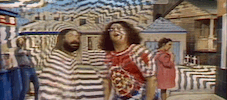
200 Motels
1971 -
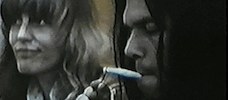
Journey Through the Past
1972 -
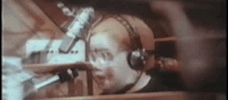
Human Highway
1982 -
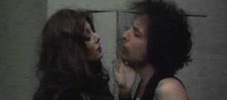
Renaldo and Clara
1978 -
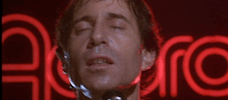
One Trick Pony
1980 -
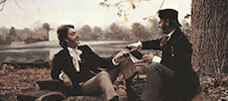
Give My Regards to Broad Street
1984 -
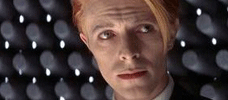
The Man Who Fell to Earth
1976 -
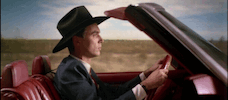
True Stories
1986
We don’t do comments anymore, but you may contact us here or find us on Twitter or Facebook.



